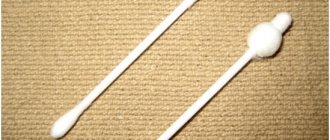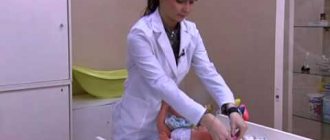Changing diapers is as much an integral part of parenting as feeding your baby. With a little practice, you will become a real guru in this matter and will stop noticing how many diapers you change in a day.
In our step-by-step guide, you'll learn how to change diapers and what the differences are between boys and girls. To ensure you're fully equipped as your baby gets older, we're sharing tips on how to change a toddler's diaper.
Finally, you'll learn how to tell when your diaper is too small and avoid leaks and other surprises.
How to change a diaper
First, make sure you have everything you need to change a diaper on hand. How to change a diaper?
1. Place your baby on his back and remove his dirty diaper. Roll the diaper tightly, secure with Velcro, and throw it in the diaper bin. If you throw dirty diapers in the trash, set the diaper aside for now and place it in a plastic bag before throwing it away to prevent the smell from spreading.
2. Gently wipe the baby's skin in the diaper area, without missing a single fold. You can use wet wipes suitable for sensitive skin, such as Pampers Sensitive or a wet cloth. Wipe your baby from front to back. If the baby pooped, then you can’t do without washing it.
3. After completing hygiene procedures, leave the baby naked for 5-10 minutes until completely dry. Air baths are very beneficial.
4. If your baby has diaper rash, apply diaper rash ointment or cream to the affected areas of the skin to create a protective layer.
5. Gently lift your baby's legs and lower body, holding his ankles, and place an open, clean diaper under his bottom. The colored pictures should be on the front of the diaper, that is, facing you. Then pull the diaper so that it is between your baby's legs and covers his tummy.
6. Pull up the wings of the diaper on the right and left sides and secure them with the sticky side in the center of the diaper on the baby’s stomach. The diaper should not fit too loosely or, conversely, too tightly: your two fingers should fit freely between the diaper and the baby's tummy. Velcro must be symmetrical. Turn the diaper cuffs around the legs to prevent leaks.
When you are finished, wash your hands and put away your “work station” (changing table, changing mat).
Instructions: how to properly put on a diaper for an adult bedridden patient
- Turn the patient onto his side. To do this, first place a rolled up cushion on the side of the patient, which will serve as a support for all the bends of the body. Afterwards, in one motion, turn the person on his side onto the spread out cushion. For greater stability, you can place a pillow on your back.
- Remove the diaper according to the described scheme, throw the used product into a container prepared in advance.
- Carry out hygiene procedures. Read more about care below in the paragraph “Nuances of care when wearing diapers.”
- Activate new diaper. To do this, completely straighten the product, slightly twist it in the longitudinal direction, shake it and straighten it again. This will help to better distribute the absorbent layer and raise the protective sides.
- Turn the diaper back with the clasps. The fasteners are always on the back, which is much larger than the front.
- Apply a clean diaper to the pelvic area, pass between the legs, straighten the folds and secure the product on one side. There is no need to tighten the Velcro too much; it is better to do this when fixing the second side.
- From the unfixed side, push the diaper slightly under the patient’s side, and then turn the person back onto his back. Flatten and secure the diaper on the free side. Velcro can be peeled off and fixed again, they are reusable, so there is no need to be afraid to change the position until the patient feels comfortable and all the folds in the groin and waist are leveled out.
What will it take to change a diaper?
So, what do you need to change your baby's diaper?
- Diapers.
It is convenient to have a sufficient number of diapers at home in reserve, so as not to be left without them at the most inopportune moment. You can even buy growing diapers in advance. Keep diapers handy, but out of your baby's reach.
- Wet wipes
. You will need them to wipe your baby's bottom. Alternatively, you can use a cloth and water.
- Diaper cream.
The cream is necessary for the prevention and treatment of diaper rash, which sooner or later appears in all babies. Diaper rash often occurs in children under 10 months of age. Regardless of age, there are many factors that influence the appearance of diaper rash: irregular diaper changes, diarrhea, introduction of complementary foods. Your pediatrician can recommend a cream or ointment for diaper rash.
- Baby changing table.
It is more convenient to change a diaper on a special table. A good option is a table with sides at least 5 cm high, which will protect the baby from falls while turning over. Many tables have shelves or drawers underneath where you can store baby care essentials.
- Changing mattress.
You will place this mattress on the table. A good choice is a mattress with a depression in the center and high sides. You can keep this mattress clean by simply wiping it with a damp cloth. Some models have a strap that allows you to secure your baby. Even if you have secured your child with a seat belt, be sure to hold him with one hand and never leave him on the table unattended. When walking and traveling, you may need a disposable diaper or a compact changing mat.
- Towel or diaper.
Changing a diaper on a changing table with a mattress is convenient, but not at all necessary. You can do this on a bed, on a sofa, or on the floor—any flat surface. Just lay down a towel or thick diaper. If you put your baby on a bed or sofa, be sure to hold him with your hand so that he does not fall. If your baby is particularly quirky, the easiest place to change his diaper will be on the floor.
- Storage for diapers.
The convenience of storage units is that they prevent unpleasant odors from spreading.
Organize a place in the nursery where you will change the baby's diaper, and have everything necessary there, including a change of clothes. This way you won't have to be distracted from your baby.
Recommendations for changing a diaper and the gender of the child
The anatomical differences between boys and girls explain the differences in their urination processes. Many diaper manufacturers provide for this difference. Therefore, diapers are produced that differ in the location of the layer that absorbs liquid secretions.
The baby diaper pattern for boys has a small space in the front and the absorbent layer is placed closer to the belly. For girls - closer to the butt.
Children are all different, and regardless of age and gender, the volume and frequency of urination may differ, and their mother determines when their diapers need to be changed. Some babies need up to 10-12 diapers per day, while others need 5-7. Babies whose skin is prone to irritation should be changed into a clean and dry diaper more often, regardless of how full it is, and it is better to carry out longer air baths with such children.
Boys
When changing boys, after unfastening the Velcro, you need to wait a minute and then remove the diaper. Since small men often experience sudden urination. If this does not happen, it is recommended that during hygiene procedures, cover the baby’s intimate organ with a napkin for insurance. Boys need to lift the scrotum and wipe the skin underneath with a wet cloth, as this area is considered problematic. Before fastening the diaper, the baby's penis is directed downwards.
Girls
The differences in changing girls' clothes lie in washing them properly. It is necessary to thoroughly wipe the intimate area, moving from the labia to the anal area. In this case, it is necessary to exclude the presence of feces in all folds and at the entrance to the vagina. Since for delicate skin, feces are dangerous irritants and pathogens.
How to change a newborn baby's diaper
If this is your first child, it will take you some time to get the hang of changing a diaper. Our step-by-step instructions will help you learn.
Immediately after your baby is born, your nurse or doula will likely show you how to do this.
With a new baby, you'll go through about ten diapers a day, so you'll have plenty of opportunity to practice.
In the first weeks of life, until the umbilical cord falls off, you can also treat the umbilical wound while changing the diaper. Check for signs of infection such as yellow discharge or redness. If you notice any of the signs, contact your pediatrician.
The baby's first stool will be a very thick greenish consistency. This is meconium. When the meconium is passed from the body, the baby's stool will change color to yellowish-green.
How to change a toddler's diaper
As your baby grows, changing his diaper can become more difficult. After all, everything around is so interesting, so the child simply cannot sit still. Diapers with stretchy sides can save parents of quirky toddlers. This diaper is worn like panties, and when it comes time to take it off, simply tear the sides. When you change an older baby's diaper, tell him what you are doing. This way he will begin to understand what is going on and this will be the first step in potty training. You can also throw the contents of the diaper into the potty or toilet in front of the child so that he understands the whole process.
How often should you change a diaper?
Experts recommend changing a diaper immediately after your baby poops and regularly throughout the day to prevent your baby from being left in a wet diaper for too long. On average, every 3-4 hours.
Depending on age, type of food (breast milk, formula, solid food) and other factors (such as digestive problems), a baby may poop after every meal, once a day, or every other day. All options are considered normal. The baby can write at intervals of one to three hours or only six times a day.
How often should you change a newborn's diaper? Be prepared to change about ten diapers a day with your newborn baby.
When to change: before or after feeding
The opinions of doctors, diaper manufacturers and parents are divided on when it is better to change a diaper: before or after meals. Study the arguments in favor of one of the options and make a decision for yourself.
Doctors' opinion
Mothers put the first diapers on their newborns in the maternity hospital under the careful supervision of pediatricians. Doctors strongly advise changing baby panties to clean ones before feeding, explaining the need for the procedure with the following arguments:
- A dirty diaper can cause anxiety when eating. At the time of feeding, the baby should be extremely comfortable.
- Food relaxes, and many children fall asleep while sucking. If the diaper is clean, then there is no problem. If it is dirty, the baby will have to be woken up and changed, it is better to do this in advance before feeding.
- Pediatricians recommend holding babies in a column for 10–15 minutes after sucking on a bottle or breast to avoid regurgitation and colic. To change a diaper, you will have to take a horizontal position, and this is undesirable right after eating. Therefore, mothers should put on clean underwear in advance.
Manufacturers' recommendations
The points of view of pediatricians are identical, but the advice to change the diaper before meals is due to different reasons. Diaper manufacturers benefit from panties being changed more frequently. Increased spending on diapers by parents makes the brand's business more profitable.
The marketing move is as follows:
- During feeding, newborns often go to the toilet in a big way.
- Moms will change their panties before eating and then take off another diaper after pooping.
- So in 1 hour two diapers will be used instead of one.
On a note! The arithmetic is simple: the more often the diaper is changed, the more often they are bought. But not every family with several children can afford such luxury.
Popular parenting solution
Most mothers do not listen to the opinions of pediatricians or the advice of advertising brochures from diaper manufacturers and act according to the situation. If the diaper is clean before feeding, put on relatively recently, and not filled with urine, then the babies are fed without first changing clothes. If a child regularly poops when sucking on a bottle, breast, and immediately after eating, then they also prefer to change disposable panties after feeding.
From a financial point of view, changing blotters after meals is also beneficial for the family budget. And you can hold the baby in a column for 15 minutes even in dirty panties, and then wash the baby and put him to bed. If your newborn constantly falls asleep while eating, change the blotting cloths more carefully, trying not to disturb his sleep.
Thus, there cannot be one correct solution. Mothers need to act according to the situation, focus on the child’s behavior during feedings, and the regularity of the child’s intestines.
On a note! If your newborn baby falls asleep during each feeding, but poops in diapers before that, use the following trick.
Do not put a diaper on your baby when breastfeeding, but first wrap the baby in a diaper. Carefully remove the soiled underwear from the sleepy child and wipe the bottom with a damp cloth. Cover the baby with a blanket and leave him to sleep. This way you won't wake up the baby and protect the skin from irritation.
How do you know if your baby needs a larger diaper size?
Here are some signs that your diaper is getting too small:
- Velcro does not reach the center of the diaper
- Your two fingers don't fit under the diaper belt
- Red marks remain on the baby's stomach or thighs
- The diaper does not cover the baby's bottom
- The child is uncomfortable - for example, he tries to pull off the diaper
In a separate article we tell you in detail how to choose the right diaper size.
Which diaper can withstand the night?
Pampers and Huggies have special night lines of diapers: Huggies DryNites and Huggies Elite Soft overnight panties ; Lovular Night panty diapers remain popular.
The advantage of overnight diapers and panty diapers is the increased volume of subabsorbent in the middle layer of the diaper. However, 90% of diapers on the market cope with the absorption of excessive amounts of moisture.
Pay attention to Huggies Elite Soft, Pampers Premium Care, Merries, Moony.
The best overnight diapers
What to do if your diaper leaks
If unpleasant surprises occur, the diaper begins to leak, it may be time to move up to a larger size. A larger diaper will not only fit better, but also absorb more moisture.
Sometimes a diaper may be the right size but still leak because you didn't put it on correctly. Check that the diaper is not too loose or too tight, that the Velcro is symmetrical, and that the cuffs around the legs are turned outward.
And although changing diapers can be tedious, think about the fact that your baby is dry and comfortable thanks to your care. Moreover, with experience, changing diapers becomes easier and simpler!
How and when to change diapers?
Recommendations for changing a disposable[1] diaper vary greatly depending on who is doing the recommending. For any manufacturer, the more often you change the diaper, the better (purely for commercial reasons).
Hence, for example, the following advice: “diapers should be changed immediately after feeding.” A mother who, while using a diaper, is also forced to think about the family budget, is unlikely to allow herself such valuable advice.
All children are different, forgive the banality, each baby develops its own, individual regime for the discharge of natural needs. The frequency and volume of urination, stool frequency, skin condition, room temperature, amount of fluid consumed - all these are factors that fundamentally influence the need to change a diaper. Again, walking in a big way is often interconnected with the satisfaction of other physiological needs, and there are many variations of this relationship. Pooping after eating is standard, but not obligatory. Sometimes this happens exclusively in the evenings, sometimes after bathing, during a night’s sleep, etc. No one better than parents can know the behavioral characteristics of their own baby and, without any recommendations, decide whether it’s time to change, or at least check how “ there" we have business.
Now for specific advice.
1 . It is an immutable rule to change your diaper after every “great need . Whatever the rate of urine absorption, it nevertheless comes into contact with feces for a certain time, and the result of this contact is the formation of substances that irritate the child’s skin. The sooner this contact is interrupted, the better.
2. It is very rational to change diapers in a situation where for a more or less long time there will be no control (going out for a walk, traveling on public transport, going to the clinic) or the strength to control (night sleep, for example).
3. Even if there is no “great need”, the likelihood that the diaper is running low after a night’s sleep or after a walk is very high. Hence the expediency of the change.
4. If during the control process the skin under the diaper turns out to be wet, change it immediately.
That's all, actually. Now about how to change.
We have already emphasized: “the part of the body that will be covered by the diaper must be clean and dry.” It is clear that this requires some parental effort.
Before changing, it is advisable to make sure that there is an oilcloth on the changing table, and a diaper on top of it. We lay the child down, unfasten the Velcro fasteners and immediately fix them so that they do not stick to the child.
The algorithm for further actions is determined by the degree of “damage” of the diaper; as a result, three options are possible.
1. The consequences of a successfully implemented “great need” are discovered.
The inner surface of the diaper, as a rule, is not completely dirty, so you can use dry and clean edges to partially “clean up the area”, moving in the direction from the navel to the butt. After this, the diaper is removed, folded and secured in this position with Velcro so as not to dirty the environment.
Now let's put the child in order. You can absolutely calmly go to the bathroom and wash your child with warm water straight from the tap. The use of soap is not at all necessary. When washing girls, the direction of the “washing” movements is important - from the stomach to the butt, and not vice versa.
You can bring water[2] into the room and wash the child using cotton wool, gauze, or soft cloth (flannel, for example).
Many companies produce special baby sanitary napkins. Already bought? Enjoy it for your health. These napkins are especially good in situations where a “great need” occurs far from the water supply (option: when the water supply is disrupted). How great it is in the summer to be able to change a diaper without returning from a walk!
2. Nothing suspicious was found under the diaper.
That is, the diaper itself has clearly become heavier, but at the same time its inner surface is clean and dry. The child’s skin is no less beautiful - also clean and dry. A standard situation that, in fact, was promised to you by those who make diapers. There is no need to do anything with the child, we change the diaper, the topic is closed.
3. “Wetting” is detected - the baby’s skin is not dry at all due to contact with urine, accordingly, the inner surface of the diaper is also wet.
Pampers have clearly exhausted their resource and must be immediately eliminated.
You can do without water, but getting thoroughly wet (the same gauze, cotton wool, flannel) and drying is a must. A sanitary napkin in such a situation is perhaps ideal.
Point 3 in the above list is the most important, because it is necessary to fundamentally understand the reason for the “wetting”. Of course, there are no complaints about the child, so the question “who is to blame?” There are only two possible answers: a) parents and b) diaper.
Most often, it is parents who forgot about the need for control and did not carry out their shift on time (overslept, went on a spree, got tired, got distracted, etc.). This is not a tragedy, anything can happen.
But if very little time has passed since the change, or if an expensive diaper turns out to be wet after two hours, then you need to think hard and find out why this happened.
Options:
- quality of the diaper - think about where and what you bought, make a decision;
- the diaper for your child is small - next time buy a larger size;
— the direction of the main jet does not coincide with the place where the sorbent is located. This does not happen with girls, but if a boy was “dressed up” in a diaper “just right”, and at the same time they did not figure out the position of the penis - that is, they did not lay it in the direction of the legs, then it is not surprising that the diaper is wet (the navel in this situation is not dry either).
Sometimes in parental practice there is an option in which the diaper “leaks” on the sides. Here you need to think, first of all, about the quality of the elastic bands (as a special case of the quality of the diaper in general) or about straightening them more carefully during the dressing process. Well, the second possible explanation is that the diaper pattern is not suitable for your feet...
[1] Sorry for the banality, but I must still emphasize: the diaper is called disposable because it can only be used once. Diapers have nothing to do with drying, washing and dry cleaning.
[2] The author has always been a categorical opponent of the recommendations that only boiled water should be used for bathing and washing. At the same time, in most cities the quality of tap water is rapidly changing, and not for the better. The amount of chlorine often exceeds all reasonable limits, so pre-treatment of water is highly desirable: boiling, heating to at least 80 ° C, installing a filter on the tap. If your cottage has an artesian well, do what you want.
author Komarovsky E.O. book Disposable diapers: popular user guide published 02/27/2010 20:01










